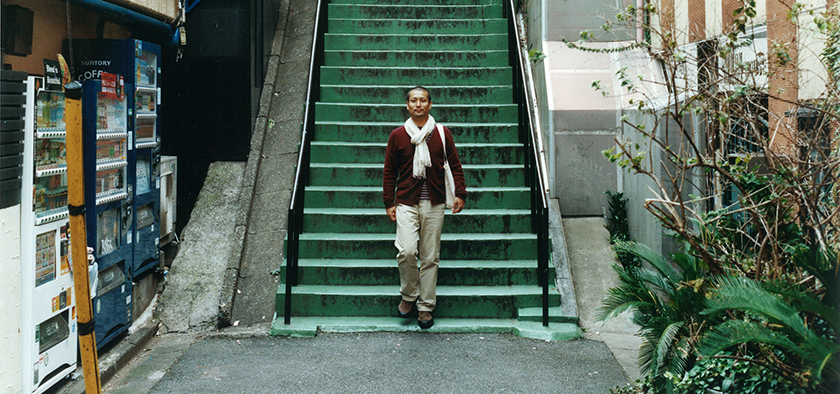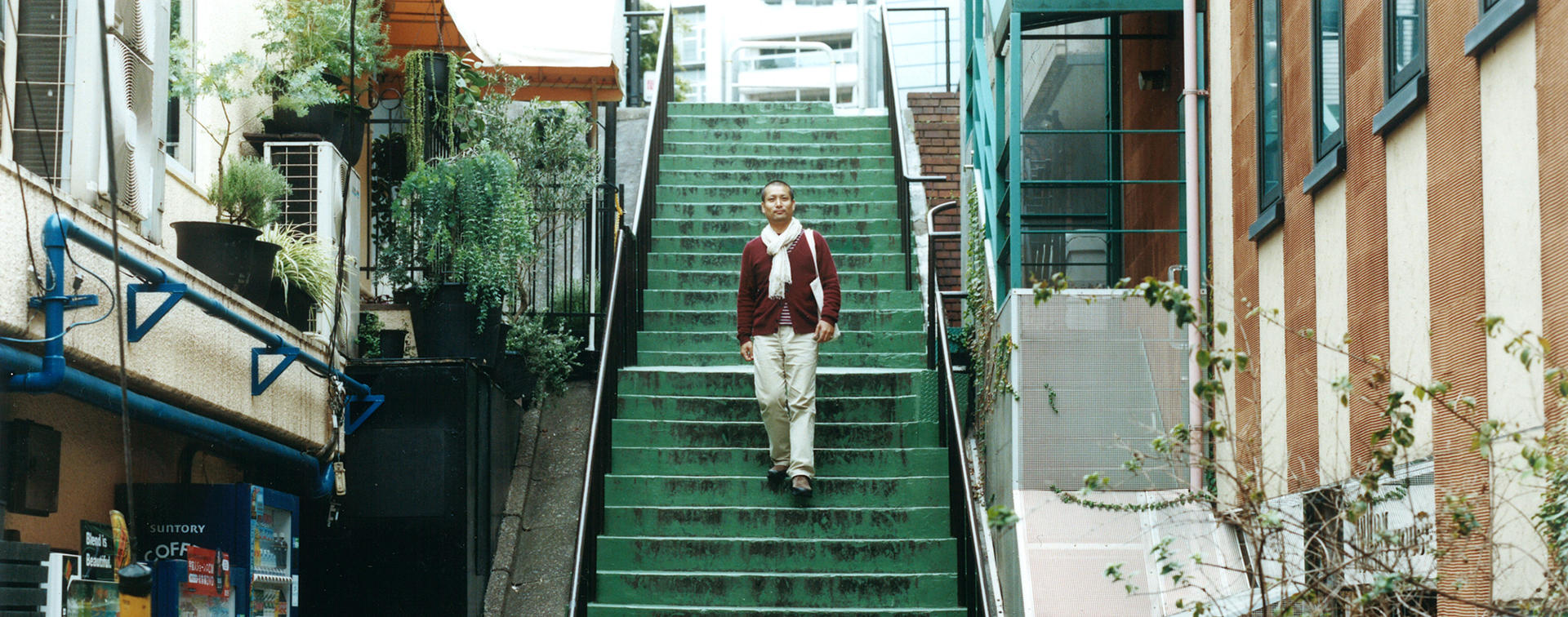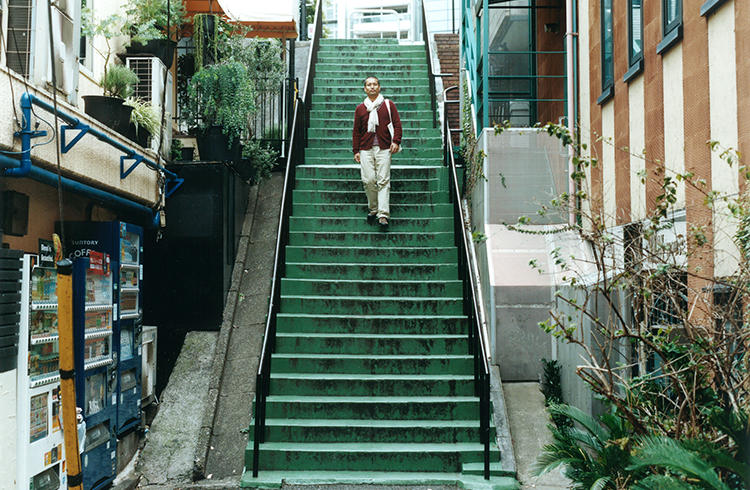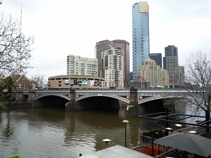


How would you turn Roppongi into an area of Design & Art?
Return handcraft to the regions and create “region-base theme communities”
- JP / EN
Ryo Yamazaki is a community designer who connects people together; he has drawn attention for playing a key role in the regeneration of regions. While known for his activities in communities in remote mountain areas and islands, Yamazaki told us that he is also strongly interested in creating communities in cities. We asked him about the need for urban communities and the role of art. In talking about making Roppongi into a place that connects people through design and art, Yamazaki first described his perspective on communities in cities.
Communities are also needed in cities
Living in the city is a lifestyle that has been hailed for the last 30 years or so, and both the public and private sectors have been earnest in building houses. However, we seem to have sadly neglected the act of building communities. The number of people in the cities has increased, but there are no communities, and even if there are, people are not taking part in them. Many seem to be simply shuttling between their homes and workplaces, being little involved with their neighborhoods. As a result, we've come to a point where we don't know our neighbors and we even get the feeling that people are not really living in the city.
For people to live better lives in cites, we need to have communities. But communities are not just created automatically: we need to take the proper steps. In Japan today, more than 30,000 people die lonely deaths annually. We need to think of ways to allow people in cities to connect to each other. I think we should do this by creating two kinds of communities: a region-based community and a theme-based community.
Region-based and theme-based communities to connect people
A region-based community is a community created in the region you live in. The "chonaikai" (neighborhood association) and "jichikai" (community associations) are representative of such communities. The theme-based community is a community where people interested in the same things such as railroads or ramen or whatever, or who have common goals, get together.

Roppongi Clean-up Association
Just like its name, this voluntary association cleans up Roppongi under the goal of turning Roppongi into a cleaner town. Participants include residents, workers in Roppongi and others. This association meets every Friday at 8 p.m. and participants clean the town for about 50 minutes. This association could be called a "theme-based and region-based community". For details, please visit their website: http://www6.ocn.ne.jp/~ro38/index-1.html
Today, we have SNS like mixi and Facebook, and people probably feel more familiar with the theme-based communities. Theme-based communities are said to be particularly strong in the cities, and there are many groups in the form of networks and circles.
On the other hand, there are many strong region-based communities in the countryside. In the cities, region-based communities are hardly functioning. The reason for this is partly because people who disliked the ties of region-based communities in the countryside moved to the city 30 years ago. Also, people who live in rented condominiums almost never attend community associations.
A new type of community with both elements
One might think that having theme-based communities is enough in the cities, but people who share the same interests and goals often do not live in the same region. When something like a disaster occurs, they are unable to help each other. I am not saying that region-based communities are more important; I'm saying that it's vital to strike a balance between both kinds of communities. I believe that we need to create a new type of community that combines the elements of both the theme-based and region-based communities.
We should think about building a system where ramen-lovers or Go (board game) enthusiasts of the same region can get together. A name doesn't exist for this but I suppose if the two communities were merged, it would become a "region-based theme community." In the United States, there is a concept of the community-based organization (CBO) which is an organization based in the region. Perhaps the CBO is closest to the idea I have in mind.

The benefits of participatory art
Now, this is where art comes in. With no connections to the region, and without the sense of really living, there are people who are worried that they have no one to look to for support in times of emergency. To connect such people, art has a huge potential because it can become a theme for a "region-based theme community."
When I say art, I'm not talking about the type of art created by world-famous artists which people gratefully appreciate. I'm talking about participatory art. For example, an event could be held for a hundred people to draw faces on little cookies and the cookies could be later displayed on the wall. The people who participated in the event would point out their works to their friends and families. The artworks would be seen by a lot of people and they would feel more familiar with art. The most important thing though, is that the people who gathered to draw the faces connect with each other. The cookies will deteriorate, so the display might have to be taken down in about two weeks, but the community that was created during the event would remain.
If communities could be created as a result of residents participating in all kinds of ways, and if more art events could bring people together in the cities, I think the feeling will disappear that you don't know anyone in the cities; people will also feel less anxious.
Handcraft for communities
I personally think the fun and potential of art lie in the very act of creating things. The word "art" originally means "artificial" or "handcraft." Using the hands might have resulted in sculpture or paintings, but I feel that the essence of art is not in the thing that was made, but in the skillful handwork. Perhaps there are things which are created and not visible to the eye. So maybe we could also say that creating a community is "art" as well.
Established art as in "ART" in capitalized letters refers to works that are made and sold, but when art originated, it was not about that. That was the realization made more than a hundred years ago by the Arts and Crafts movement in England and later by the Mingei (folk art) in Japan which saw value in handcraft. In my view, those two movements were about community-creating art.
In the Mingei movement, there was the custom for each household to store the produce harvested by the farmers in pots and baskets. So in the town there were always people who made the pots and baskets. During the off-seasons on the farms, people made things by hand every day and their skills were heightened; there is beauty in such things that is different from the beauty of capitalized "ART." They called that "mingei". It was about the skills for the community - handcraft for the region. Art was originally rooted in the neighborhood.
The excitement over artworks which can be exchanged on the global market like financial products is a phenomenon that has been seen for only the last 50 years or so in Japan. In Japan's long history, the high-growth period and the bubble period were periods where the economy was in a rather abnormal state. From now on, society will go back to the state where there is no excessive money lying in the markets; the value of art must also go back to its original state. I think we need to quietly take steps to return art to the regions.
"Agriculture" as "art" in Roppongi
Roppongi seems to have all the conditions necessary as an experimental place for a "region-based theme community." There are no deep connections between people here. I think people would be glad to participate in fun art events; they would be delighted to find people other than their families whom they could enjoy art with.
People who come to the events on the weekends might happen to see each other on a weekday morning. They might have casually attended the event, but the pleasure of an unexpected encounter will be great.
I think any kind of art would be okay for projects in Roppongi; maybe "farming" would be a good theme from the perspective of handwork. Farming is something that anyone can become involved in; the results are clearly visible and it's good too that you can eat what you made. Mothers have this desire to take their children to the countryside; when they get the opportunity they later happily say, "I was able to let my children touch the soil." I think it's very natural to have that kind of desire.

Roppongi Nouen
During the interview, Yamazaki mentioned "Roppongi Nouen", the experimental agricultural restaurant located in a Roppongi backstreet. The restaurant offers meals using farm produce procured through the "Nouka no kosegare network" (network of farmers' sons). The network consists of people working in Tokyo whose parents are farmers. The aim of the network is to support the food producers and to let city people know about the importance and appeal of the farming industry. The interview with Hima Furuta, owner of Roppongi Nouen can be read here.
6-6-15 Roppongi Minato city, Tokyo
To me, the farmer is an artist. "hyaku" (hundred) in "hyakusho" (farmer) implies a person who can do a hundred jobs by hand. A farmer is a person who can do everything skillfully by himself. So I would propose inviting a farmer, who is essentially an artist, to instruct people how to use the hands to make art, i.e., grow food. The participants would "make art" for a period of about six months and then they would use their "artworks", i.e., farm produce, to make meals which they would enjoy together. It is possible to expand the concept of art. I think that it would be very artistic to incorporate farming in one's life.

Melbourne, Australia where I stayed for a year
The city I like best in the world is Melbourne. It used to be the capital of Australia; I lived there for about a year. Australia is a young country and has a history of only about 230 years, but precisely because of that, its people take really good care of old streets and buildings.
For example, there is a movement to conserve the bridges over the Yarra River that flows through Melbourne. They're about 100 years old. In Japan, there are many buildings and bridges that are more than 100 years old. But the Australians are serious about conserving things; because they don't have a long history they are afraid that if they destroy old things, they will have even less of history left. Since Melbourne is the oldest city in Australia, the residents have a strong sense of responsibility for conservation than in any other place in the country, and I thought that was admirable.

The "Princess Bridge" over the Yarra River in Melbourne
It is one of the representative bridges in Melbourne. In 1850, gas lamps were placed upon residents' request. This has always been a beloved architectural structure by residents.
The other nice aspect of Melbourne is that it takes only 20 minutes by tram from the city center to get to the countryside. In the south lies the sea and in the north are the mountains. You can live in the city and casually go to barbeques or camping without fuss. It's a city where city life and nature is very well balanced.
Developing people and the future of Tohoku
In my work, what interests me most is developing people. Because there are not enough people like myself (laughs). There are many ways of empowering a community. There are times when community empowerment is needed for government administration or an organization within a company. I hope that there will be more people in the future who, by using workshop and team building skills, can work to enhance their performance of groups, bringing the strength of the group members together.
We are currently taking moves to set up community design faculties in the universities in the Tohoku region. If we can get approval from the Education Ministry, we will start calling for applications in 2013.
The disaster-stricken areas are entering a stage where all kinds of consensus-building will be necessary. So far, the issues have been about where to move the rubble and what can be done for people to comfortably live in the temporary houses, but during the year of 2013, a lot of decisions are likely to be made on matters such as where to build the roads, and whether to build houses or national park in certain areas. And from around 2014, we will finally be reaching the stage of discussing what kind of towns we want to make. By then, people will be leaving their temporary homes. During the discussions that will be held then, we need people who can help residents reach agreements, with consensus being built in each community.
Skills cultivated in Tohoku can be used elsewhere in Japan
The students studying at the universities' "community design faculties" will be going to the disaster-affected areas for hands-on-training and they will be able to get plenty of experience to cultivate their skills. A person who goes to a place being reconstructed, and spends four years there helping the people to come to an agreement is a person whose skills will be useful in other regions as well. Such people will no doubt become experts at creating communities, whether in the cities or in the sparsely populated mountain regions or forgotten shopping districts. The Tohoku people are people of few words, but if the community designers could manage to get the Tohoku people talking, I'm sure they would find little difficulty working elsewhere. The people in Tokyo for instance, talk a lot, and are easy to deal with. And working with people in Roppongi would be a breeze! (laughs)
In terms of cultivating skills, I think working with people in the south, in Osaka, would also be a great learning experience. Community designers who participate in community-creating discussions get scolded for just by being there. About 50 gramps would be demanding to know what you are doing there using taxpayers' money. If you can succeed in organizing the talks of the Osaka people, then when you go to other regions, the people will all seem gentler. So I really hope that the young people will experience working with communities in both Tohoku and Osaka, and become great community designers. There are so many places where they could make a difference.
Editor's thoughts
Yamazaki-san came along the Roppongi street for the photo shoot, approaching us with a cheery hello, and apologizing for being late. Everything he said during the interview was easy to understand and we could see how his words were grounded in his many experiences around the country. Yamazaki made us see that urban Roppongi needs a community that has elements of both region-based and theme-based communities. The challenge for us now is to think of ways to incorporate design and art in such a community.



















